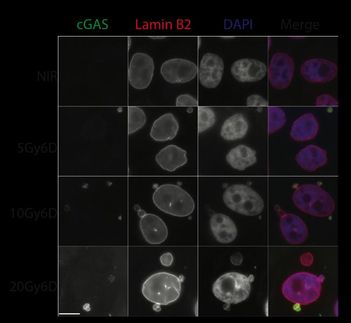One Year of GATTEX(TM) Therapy Safely Reduces Parenteral Nutrition Dependence for Patients with Short Bowel Syndrome
Results Presented at American College of Gastroenterology Annual Meeting Show Majority of Responders Continued to Benefit from GATTEX in Phase 3-Extension Study
Advertisement
NPS Pharmaceuticals, Inc. presented positive one-year data from a Phase 3-extension study of GATTEX™ (teduglutide), an investigational product for patients dependent upon parenteral nutrition due to short bowel syndrome (SBS). SBS is primarily caused by intestinal resection and the subsequent inability to maintain oral fluid, electrolyte, and nutrient balances. The results showed GATTEX was well tolerated out to one year and provided the ability to safely reduce parenteral nutrition (PN) dependence. In addition, 75 percent of patients who responded to GATTEX during the first 24 weeks of therapy maintained their response, with many having further reductions in their PN volume. Three patients who gained independence from PN during the first 24 weeks of therapy remained off PN at week 52 and one additional patient was weaned from PN during the 28-week extension phase. These patients had so far remained PN-independent for periods ranging from 0.5 to 3.5 years.
The data were presented during an oral presentation on “Treatment Out to 1 Year with a GLP-2 Analog, Teduglutide, Safely Reduces Parenteral Nutrition (PN) Needs in PN-Dependent Short Bowel Syndrome (SBS) Patients” at the American College of Gastroenterology (ACG) Annual Scientific Meeting by Richard Gilroy, M.D., Assistant Professor of Medicine, Division of Gastroenterology/Hepatology, The University of Kansas Medical Center.
“After one year of therapy with GATTEX, patients with short bowel syndrome were able to dramatically reduce, and in some cases eliminate, their dependence on parenteral nutrition,” said Dr. Gilroy. “Beyond the inconvenience of parenteral nutrition dependence, this patient population has many morbidities and even mortality associated with their therapy. GATTEX data to date suggests that patients could reduce their reliance on PN therapy, and likely thereby lessening PN-associated complications. Improvements in quality of life I suspect will follow and this should free them from parenteral nutrition’s inconvenience. I believe this will lead to a reduction in days from PN per week. The growing body of data regarding GATTEX continues to support its development as a first-in-class drug.”
GATTEX Phase 3-Extension Study Design
The GATTEX 28-week Phase 3 blinded, placebo-controlled-extension study enrolled 65 of the 71 patients (91 percent) who had completed a 24-week randomized Phase 3 study that evaluated low-dose GATTEX (0.05 mg/kg/day) and high-dose GATTEX (0.10 mg/kg/day) versus placebo. Patients who were already receiving GATTEX in the Phase 3 study continued on their dose for an additional 28 weeks for a total of 52 weeks of therapy. Patients who were receiving placebo in the Phase 3 study were randomized to receive one of the two doses for a total of 28 weeks of therapy.
The primary objective of the Phase 3 extension study was to evaluate the long-term safety and tolerability of daily GATTEX dosing for up to 52 weeks. A number of efficacy measures were included as secondary endpoints with response defined as maintaining, improving upon or developing a 20 percent or greater reduction in weekly PN volume at week 28 of the extension phase.
Key findings from the study:
* GATTEX demonstrated an excellent safety and tolerability profile for up to one year, which was the primary endpoint of the extension study. There were no relevant differences in the incidence rate of adverse events or serious adverse events among the treatment groups when compared to placebo, with the exception of injection site reactions, which were higher for the high-dose GATTEX group.
* Twelve of the 16 patients (75 percent) who responded to low-dose GATTEX during the initial 24-week phase maintained their response during the 28-week extension phase, with 10 of the 16 (62 percent) achieving further reductions in PN volumes during the extension phase.
* Six of the eight (75 percent) patients who responded to high-dose GATTEX during the initial 24-week phase maintained their response during the 28-week extension phase, with two of the eight (25 percent) achieving further reductions in PN volumes during the extension phase.
* Two low-dose patients and one high-dose patient gained independence from and discontinued PN by the end of treatment during the initial 24-week phase. All three remained off PN. One additional low-dose patient was weaned from PN during the extension study.
* Patients treated with low-dose GATTEX achieved mean weekly reductions from baseline in PN volume of 4.9L (57 percent) and those treated with high-dose GATTEX experienced mean weekly reductions from baseline of 3.3L (27 percent).
* Six out of six patients who had previously received placebo in the initial 24-week phase and were randomized to low-dose and two out of seven (29 percent) patients who had previously received placebo in the Phase 3 study and were randomized to high-dose GATTEX therapy achieved a 20 percent or greater reduction in PN after 28 weeks of therapy in the extension study.
Additional Data Presented at ACG
Two additional poster presentations related to GATTEX and SBS were presented at ACG and are summarized below.
Abstract P64: Teduglutide, a GLP-2 analog, enhances intestinal structure in short bowel syndrome (SBS) patients dependent on parenteral nutrition (PN), by Tappenden et al.
To assess the crypt-villus architecture, Kelly Tappenden, PhD, University of Illinois and colleagues reviewed endoscopic biopsies obtained at weeks zero and 24 of small intestine (placebo (n=9), low-dose (n=17), and high-dose (n=20) or large intestine (placebo (n=9), low-dose (n=20), and high-dose (n=22). Small intestinal villus height changed -19 percent, +54 percent, and +39 percent in the placebo, low-dose, and high-dose groups, respectively. When expressed as a change from baseline, villus height in both the low-dose (p=0.0065) and high-dose (p=0.0024) groups exceeded that of placebo. Intestinal crypt depth was increased in low-dose and high-dose when compared to placebo in both the small intestine and the large intestine; however, only the high-dose reached statistical significance.
These data indicate that GATTEX induced the expansion of the mucosal epithelium of adult patients with SBS and may therefore enhance capacity to digest and absorb orally consumed nutrients. Importantly, the DNA, RNA, and protein composition of the GATTEX remodeled mucosa did not differ from placebo.
Abstract P822: Pharmcokinetic/Pharmacodynamic correlation between Teduglutide, an analog of GLP-2, and citrulline, a biomarker of small intestinal enterocyte functional mass in short bowel patients, by Messing et al.
To assess the pharmacokinetic and pharmacodynamic (PK/PD) correlation between teduglutide and citrulline, a potential biomarker of intestinal function in SBS, Bernard Messing, MD, Hôpital Beaujon, Clichy, France, and colleagues studied teduglutide and citrulline plasma concentrations every four weeks for the PN-dependent SBS patients randomized and dosed to placebo, low-dose or high-dose for the 24-week Phase 3 study. As compared to baseline, mean citrulline levels at week 24 for placebo, low-dose and high-dose subjects increased by 7.9 percent (p=0.1297), 49.4 percent (p=0.001), and 113.1 percent (p=0.001), respectively. These results suggest that citrulline may be used as a surrogate marker of increased epithelial mass in SBS patients treated with teduglutide.
Previously Reported Phase 3 Results
In October 2007, NPS reported positive top-line results from the company’s Phase 3 study of GATTEX in which 83 patients with short bowel syndrome (SBS) received either a low dose of GATTEX (0.05 mg/kg/day), a higher dose (0.10 mg/kg/day) or placebo. The clinical efficacy endpoint of the study was a reduction in PN of at least 20% comparing baseline to weeks 20 to 24, measured as a graded response to capture reductions up to 100 percent. In an intent-to-treat analysis, forty-six percent (46 percent) of patients receiving the lower dose of GATTEX (N=35) responded and achieved a significant reduction in PN compared to placebo (p=0.007). Twenty-five percent (25 percent) of patients receiving the higher dose of GATTEX (N=32) responded and showed a trend in the difference between the treatment group and placebo, but this did not reach statistical significance (p=0.161). Two low-dose patients gained independence from and discontinued PN by week 16 and a high-dose patient discontinued PN at the end of treatment. The study’s criteria for conducting the statistical analysis of the primary endpoint required that the results for the high-dose group show statistical significance before the results of the low-dose group could be considered. Given the drug’s orphan designation in SBS and the statistically strong (p=0.007) and clinically meaningful findings in the low-dose group, the company met with the FDA to discuss the regulatory pathway for GATTEX. NPS will shortly begin a Phase 3 confirmatory study for the evaluation of GATTEX versus placebo in patients with PN-dependent SBS with an initial PN optimization and stabilization period followed by a dosing period of 24 weeks. NPS believes positive results from this study would enable the company to seek U.S. marketing approval for GATTEX in this indication.





















































